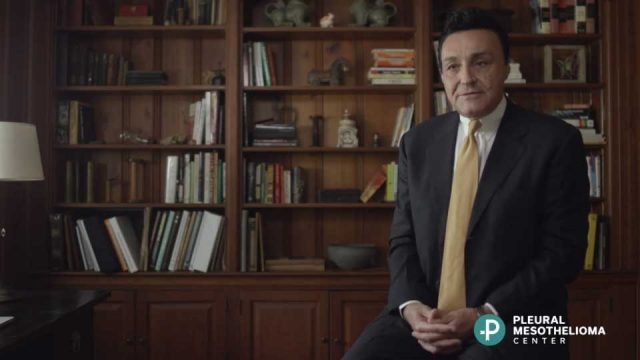Pleurectomy and Decortication Surgery
Pleurectomy and decortication is a type of tumor-removing surgery for pleural mesothelioma. It involves removing the pleural lung lining and all visible tumors. Though it is an aggressive treatment, it leaves the affected lung in place to preserve the patient’s quality of life.
Many pleural mesothelioma specialists believe a pleurectomy and decortication procedure gives patients the best chance of living longer.
A 2018 Journal of Thoracic and Cardiovascular Surgery study reported the long-term results of 49 patients who underwent the procedure in addition to a special form of local chemotherapy. The median overall survival was 22 months, with zero deaths within 90 days of the surgery.
Pleurectomy and decortication is usually combined with other treatments such as chemotherapy and radiation. This multimodal approach leads to the best results in mesothelioma treatment.
Only a small fraction of patients are eligible for mesothelioma surgery. Some patients are not fit enough to handle the stress of surgery, so doctors recommend less-invasive treatments.
Doctors must also rule out aggressive surgery in cases where the cancer has already spread to other sites. When cancer cells enter the bloodstream and spread throughout the body, removing cancer surgically is not feasible.
Even when a patient appears to be a candidate for a pleurectomy and decortication, surgeons can only make the final call when they look inside the patient’s chest. They must see firsthand how far the tumors have grown.
If the tumor has spread into a patient’s lung, the more extensive extrapleural pneumonectomy procedure may be necessary.
What Is a Pleurectomy and Decortication?
Pleurectomy involves opening the chest and removing the pleural lining around the lungs. Decortication then removes all visible cancer growth left in the chest cavity. The patient goes under general anesthesia before the surgery begins, and the procedure takes about five hours.
Pleurectomy was originally a type of palliative treatment, used to relieve pain for pleural mesothelioma patients. When advances in surgery made decortication possible, some mesothelioma specialists began to combine the two procedures.
This gives patients a less-invasive alternative to the older extrapleural pneumonectomy procedure, which involves removing a lung.
Pleurectomy Procedure
To perform a pleurectomy, the surgeon makes a laceration along the back of the torso. The cut begins around the sixth rib and extends downward, parallel to the spine. The cut then extends outward, parallel to the ribs.
The incision allows surgeons the best access to the thoracic cavity. The surgeon may make another small incision if the tumor is large and extends into the lower half of the thoracic cavity.
Once the surgeon has maximum exposure to the tumor, they remove the outside lining of the lungs. They may also have to remove parts of the chest wall, diaphragm (breathing muscle) and heart sac.
Decortication Procedure
The same surgeon then performs the decortication. The surgeon might scrape the lining of the lung to more effectively remove as much of the cancer as possible, but they leave the lung intact. The surgeon will pack the open chest cavity with gauze or similar material to minimize blood loss.
Top mesothelioma specialists sometimes combine this part of the surgery with experimental techniques:
- Photodynamic therapy uses a light-activated chemotherapy drug.
- Hyperthermic intrathoracic chemotherapy involves washing the chest cavity with a heated chemotherapy solution.
Once the bleeding is minimal and all visible tumor growth has been removed, the surgeon closes the incision with stitches.
A patient may undergo a pleurectomy without the decortication if tumor spread is extensive.

Benefits and Risks of Pleurectomy and Decortication
Pleurectomy and decortication is the less invasive of the two main surgical options for pleural mesothelioma. But all aggressive surgeries come with risks.
The table below compares outcomes for pleurectomy and decortication and extrapleural pneumonectomy. Overall survival is similar for both procedures, with half of patients living longer than 20 months after surgery.
| Pleurectomy/Decortication | Extrapleural Pneumonectomy | |
|---|---|---|
| Invasiveness | Surgeon removes the lining of the lung and nearby tissues affected by cancer. | Surgeon removes an entire lung plus surrounding tissue. |
| Success Rate | Symptoms are reduced in 90 percent of patients. | Reduction in symptoms comes with permanent reduction in stamina. |
| Mortality Risk | 1 to 2 percent of patients die during or immediately after surgery. | 4 to 5 percent of patients die during or immediately after surgery. |
| Complications | 1 in 10 patients suffer a prolonged air leak in the chest, which is the most common complication. | Carries higher risk of severe complications such as abnormal heart rate or arterial blockage. |
Other complications that may arise from a pleurectomy and decortication include internal bleeding, blood clots, pneumonia, infection and respiratory or cardiac failure.
Recovering from a Pleurectomy and Decortication
After surgery, a patient can experience some blood loss and should expect about a weeklong hospital stay for monitoring. Once the anesthesia wears off and the patient is awake, they are moved to a recovery room where their vitals are monitored.
At first, patients breathe with the assistance of a ventilator, a machine that delivers oxygen to the lungs through a tube. The medical care team weans the patient off the ventilator as soon as they believe the patient is able to breathe without assistance.
Factors that affect when a patient can be taken off ventilation include:
- Pain level
- Muscle fatigue
- Proper kidney function
- The removal of any continuous IV sedation
A spontaneous breathing trial allows the patient to try to breathe on their own while they are still connected to a ventilator. This test will predict if the patient is ready to breathe on their own.
After coming off the ventilator, the patient may be instructed to practice deep breathing to avoid infection and work out their diaphragm.
During recovery, patients will also be fitted with chest tubes to help drain any excess fluid built up after surgery, which can cause infection. Coughing exercises can also help remove fluid buildup and strengthen the diaphragm.
Mesothelioma doctors may run a pulmonary function test to ensure the surgery didn’t affect the patient’s breathing and lung capability. They may also run occasional blood tests to make sure there is no infection.
Once the patient is released from the hospital, at-home recovery may last a few weeks.



